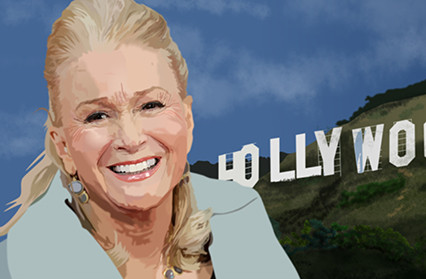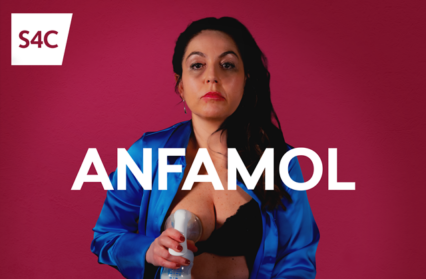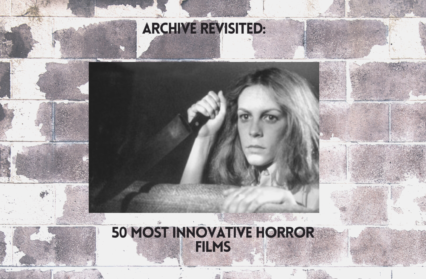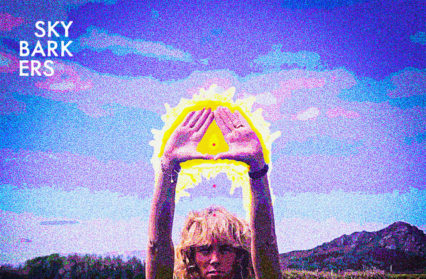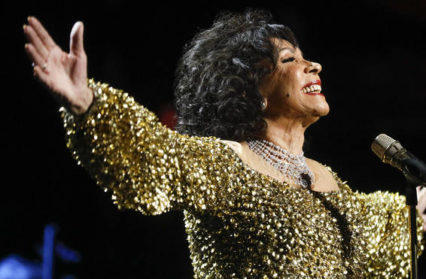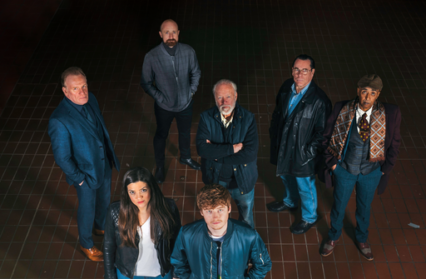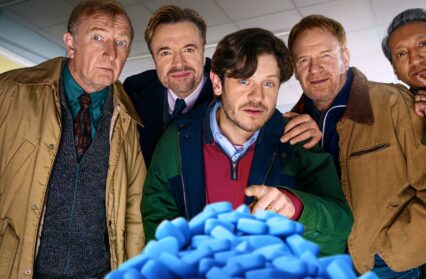‘Please, do have some coffee,’ Diane Ladd says, nudging the tray on the glass-top table in front of us towards me. ‘I’ve already had a bunch this morning, but please -‘
She waves her hands over the silver coffee pot and delicate china cups and beams. Though a three times Oscar-nominated, BAFTA award-winning bona fide Hollywood star, Southern hospitality is as deeply rooted in her persona as the marvellous lilt of her Mississippi accent.
We are in the actress’ suite in New Orleans’ Hotel Monteleone, the city’s grande dame of accommodations; favoured haunt over the years of a raft of literary legends – Ernest Hemingway, William Faulkner, Truman Capote, Eudora Welty, who each have suites here named after them; as does Ladd’s own cousin ‘Tom’, the playwright Tennessee Williams.
‘I brought them a big 11 by 14 picture, it says “seventeen year-old Diane Ladd as Carol Cutrere in her cousin Tennessee Williams’ off-Broadway hit revival of Orpheus Descending, 1959.”‘ Ladd says, ‘I was seventeen and that was my first play in New York. They’re going to put it in the Tennessee Williams room here.’
Williams, it so happens is the reason for both our visits to the Crescent city and to the Monteleone. The hotel is also the headquarters of the annual Tennessee Williams New Orleans Literary Festival now in its 28th year; a four day event comprising literary panels, a scholars’ conference and an abundance of theatre.
Ladd is undoubtedly this year’s stellar signing; tickets for an intimate audience with the actress in the hotel’s ornate Queen Anne Ballroom sold out before the festival’s first day, and her performance in The Place That I Was Made For, a theatrical patchwork made up of a variety of Tennessee Williams’ writing, is Saturday night’s hottest ticket.
‘I just love New Orleans,’ Ladd enthuses turning to the suite’s wall to wall, floor to ceiling windows that offer a panoramic view of the city’s other leading lady – the mighty Mississippi river.
‘Look at the river out there!’ she exclaims, moulding the last word of her sentence into a beautifully two-syllabled ‘THEY –AH.’
‘My Mississippi! She’s looking muddy today.’
For a moment, we both stare at the vast body of water snaking along the edge of the city’s French Quarter. Barge horns wail as they pass; the steamboat Natchez, stuffed with tourists paddles idly by. Ladd looks on appreciatively, as if seeing the view for the first time.
Like her cousin, who she didn’t know growing up: ‘Tom had moved from Mississippi by then’, Ladd gravitated towards New Orleans at a young age, first taking a place at a finishing school a stones-throw from our current location. After a short stint there, ‘It almost finished me. You walked around with a book on your head and the diction teacher had a worse accent than I did’, aged sixteen she went to work as a private secretary, picking up a little theatre work and singing with a jazz band in her spare time.
The city that had years previously offered so much to a young Tennessee Williams, who referred to it fondly as his ‘spiritual home’, has a similar billing in Ladd’s life story. While acting in a play at the long since closed Gallery Circle Theatre near Jackson Square, Ladd was discovered by another of the Deep South’s legendary daughters, Georgia Simmons. At the time, Simmonds was starring with John Carradine, whom Ladd refers to as ‘David and Keith’s daddy,’ in a San Francisco stage production of Erskine Caldwell’s bestseller Tobacco Road, the darkly comedic tale of a family of dirt poor dirt farmers in Depression-era Georgia. At the time, the production was looking for someone to fill the role of child-bride Pearl. Simmonds made the call to Carradine, and Ladd was on her way to California.
‘My father gave me $25 for the trip and said “Girl, when that money’s gone, you come right on home”. So for me New Orleans was my very first taste of freedom.
‘I love coming back here. The energy makes you feel great. It’s like velvet, it’s like God’s hand. When you have people dancing on the streets, music and art everywhere – that’s the way it should be.’
Ladd, like the muddy waters of her beloved Mississippi, is a force of nature; it is impossible not to be swept along by the current of her magnetic personality and mile-a-minute conversation. She exudes a steely strength, an indefatigable determination that has no doubt ensured her place at Hollywood’s top table; yet her manner is gentle and light.
She trills through struggle after struggle: the hardships of making it as an actress in New York; her hard fought, ultimately successful campaign to get the New York Times to review the largely overlooked Equity Library Theatre; her treatment in a male dominated Hollywood: ‘They do not treat women right. I would like to remind the filmmakers in Hollywood – there are two in our species, male and female.’ Making it clear throughout that though times have often been hard, her dust yourself off and try again attitude, or ‘adjustability’ as she phrases it, is key.
This strength of personality led to her first professional connection to Williams and his work. Ladd was acting in an off-Broadway production of Tennessee’s Orpheus Descending, a play met with a tepid reception and a limited run when it debuted two years previously. Despite its troubles on stage, at the time of Ladd’s production a big screen adaption was planned starring Marlon Brando and Anna Magnani.
‘We did the play for Equity Library Theatre for no money and the studio said they weren’t going to let us carry on because they were making a movie out of it.’ Ladd says,
‘So I called Tom on the phone and I said “I’m your cousin. You got to come see this play.” So he did and he flipped out and let us do it. They tried to get him to close us and he sent a telegram back to the studio that said “I will not close a good play downtown for a bad movie uptown.” I don’t know that it was a bad movie, but that’s what he did.’
The play, which following Williams’ intervention ran for over a year, proved significant in Ladd’s personal life also. It was during her time in Orpheus that she met her first husband, the actor Bruce Dern.
‘That’s where we met and fell in love’ Ladd says, ‘So I would say Tom affected my whole life.’
The fruits of Ladd and Dern’s nine year marriage have set many precedents in Hollywood’s history books. Along with their daughter, the actress Laura Dern, the trio are the only family to be awarded side-by-side stars on the Hollywood Walk of Fame. Ladd is also the only woman to direct an ex-husband; she and Bruce worked together on the film Mrs Munck, an enterprise that led to comparisons with the work of Woody Allen.
‘I make a joke, I say “ladies, if you want revenge, direct your ex-husband.” But I’m only kidding,’ Ladd says, laughing.
Mother and daughter also have a long history of on-screen collaboration, most recently seen together in HBO’s critically acclaimed, yet nevertheless axed series Enlightened. The network’s decision to pull the plug at the end of the show’s second season Ladd describes as ‘…a catastrophe. Time Magazine called it one of the best shows in fifty years – that’s not chopped liver.’
She has also starred with Laura in a string of movies, their performances in the 1991 drama Rambling Rose resulting in yet another first.
‘Laura and I made history as the only mother and daughter to both be nominated for Oscars at the same time’ she says proudly, ‘So just look at what Tom got going.’
Ladd’s family life, however, hasn’t always been a seemingly never-ending series of accolades and celebration. Her first-born daughter with Bruce died in an accident when just two years old. Ladd then had an ectopic pregnancy and was told by doctors that it was unlikely she would have another child.
She did, as always, adjust; took the time to ‘…educate myself about my situation’, and was ‘blessed by the miracle birth of my Laura Dern.’
She has written a book about her experiences during this period, Spiralling Through The School Of Life, the profits from which she has donated to the Arts and Culture Taskforce, also established by the actress ‘…to help art and culture and education in this country.’
Ladd smiles and leans back in the floral armchair that is upholstered in synchronicity with the hotel’s heavy, expensive looking curtains.
‘I was born with great faith. I have faith in humanity, I have faith in people. Sometimes it short circuits and I’m disappointed, but we shouldn’t let other people affect us and who we are.’
A deep spirituality is something both her and Williams shared, and was a subject they often discussed.
‘Tom was a very spiritual being. He was a 360 degree person,’ Ladd says, patting the arm of her chair as if to emphasise the point.
‘I once said to him, “Tom you have a great brain”, and he said to me, “Diane I don’t write with my brain.” He meant he writes with his soul.’
Indeed the piece of work performed by Ladd at the festival is The Angel in the Alcove, an early Williams One Act based on his first experiences of New Orleans as a young man in his twenties struggling to come to terms with his sexuality.
In the play, the protagonist, a young writer, rents a decrepit room from a deeply unpleasant, domineering landlady in the Quarter. Every evening an angel appears in the corner of the young man’s room, a presence that comforts him ‘…her eyes were fixed up on me with a gentle, unquestioning look which I came to remember as having belonged to my grandmother.’
When the writer embarks upon a relationship with another man, a young artist, the angel’s gentle, unquestioning look does not alter. The landlady however, filled with rage, collects the artist’s belongings and puts them out into the street telling him never to return.
How was it for Ladd, I ask, performing such a deeply autobiographical piece of Williams’ writing that laid him bare?
‘He truly did have angels talking to him’ she says earnestly.
‘If you think about in the South back then a boy who wants to be an artist not a businessman; a boy who’s gay, his family, well they just had no conception of his world at all. His first big hit, The Glass Menagerie, Tom told me that when his mother came to see it, he was so excited and she came backstage when the play was over and he said “Mother how did you like my play?” with great enthusiasm and she just slapped him right across the face.’
Ladd shakes her head and as she is doing so I begin to imagine the scene she has just described play out with herself in Williams’ shoes. Edwina, the imposing matriarch, a figure featured heavily in much of Williams’ work would certainly have met her match.
Well known for portraying strong female roles, Ladd is also an accomplished director and has written a collection of well received short stories and several screenplays.
‘I love writing, I love directing and I love acting. I’ll always love acting’ she says.
‘Maybe directing is my favourite, but women directors don’t do so well in Hollywood.’
Ladd is currently working on a film, The Woman Inside, based on the life of Martha Mitchell, the legendary forthright Southern wife of President Richard Nixon’s Attorney General. Mitchell gained notoriety during the Watergate scandal with her unorthodox briefings to reporters of goings on at the White House. Her larger than life personality and increasingly apparent drinking problem led to her accurate claims of corruption being largely ignored.
‘She’s not well known for the truth and she was a truth teller. We need truth.’ Ladd says animatedly, her passion for the subject immediately apparent.
‘Truth will come out sooner or later and Martha knew it all and she had something to say to the people of this country. She was an amazing woman.’
Ladd sits forward and fixes me with a stare.
‘She knew who killed Kennedy. She knew everything because her husband was the number one lawyer in the country. She had people following her and opening her mail. People threatened her life. She was kidnapped and held prisoner.’
The Mitchell project, ‘…my destiny’, is something the actress has been working on for over thirty years, writing and re-writing the screen play fourteen times to perfect it. Currently in discussions with Martin Scorsese, Ladd hopes to secure the finance needed to begin filming within the next year.
‘Richard Attenborough told me it took him almost seven years to get Gandhi made, Warren Beatty told me it took him twelve years to get Bonnie and Clyde made – so I guess I’m on schedule.’ She throws her head back and laughs.
‘There is a thing called timing. Learning patience has been very difficult.’
The art of timing is something in which Ladd is well versed. On that first train ride from New Orleans to California as a wide-eyed sixteen year-old she made only one companion – a certain Mrs Nixon.
‘How funny, that Nixon’s mother was my first friend and now I’m making a film about Martha.’
She muses, thinking back on those first tentative steps into her adult life with little more than her father’s $25.
‘It was over forty years ago I was discovered here in New Orleans and here I am back on stage having accomplished a few things. Not bad for a girl who grew up helping her daddy sell medicine for chickens.’
Illustration by Dean Lewis


